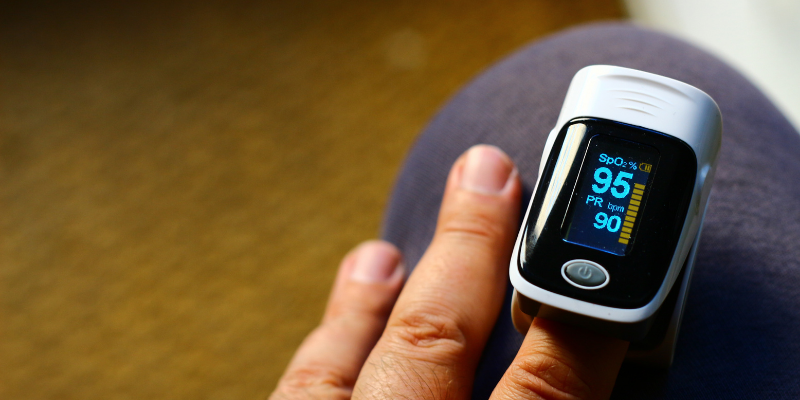Pulse Oximetry: What Do Your Readings Mean?
Posted On: February 12, 2022 by CarePro Health Services in: Heart Health Oxygen Pulse Oximeter

For individuals who have heart disease, anemia, asthma or COPD, using a pulse oximeter to measure their blood oxygen levels is a vital part of their health. Your blood oxygen level is a measure of how much oxygen your red blood cells are carrying. Maintaining a balance of oxygen-saturated blood is very important to your health. Whether you’re a new user or a veteran of this device, you may not know what the device readings mean and how to understand them. Below, we’ve explained what pulse oximetry readings mean to help you better understand your oxygen saturation levels.
How Does a Pulse Oximeter Work?
Before we jump into explaining where your blood oxygen levels should fall, let’s go over how a pulse oximeter works. A pulse oximeter is a small, clip-like device that determines the percentage of red blood cells in your bloodstream that are carrying oxygen to various parts of your body by sending infrared light into the capillaries in your finger, toe or earlobe.
How to Interpret Your Pulse Oximeter Readings
Pulse oximetry tests are an estimate of blood oxygen levels (this measurement is called your oxygen saturation level). This is the oxygen saturation level necessary to keep your cells healthy. If you have specific questions about your readings, be sure to talk with your doctor to determine your range.
Normal
If your blood oxygen level (SpO2) is measured by a pulse oximeter, a normal reading is typically between 95 and 100 percent. This indicates that your heart is beating normally and carrying enough oxygen to the rest of your body to keep you healthy.
If this reading is outside of its normal range for you, it may be an indicator that something is wrong that is preventing your body from effectively oxygenating your bloodstream. However, if you have COPD or a chronic disease, these ranges may not apply. Your doctor will inform you of what is normal for your specific condition.
Below Normal
An oxygen saturation level that is considered below normal is called hypoxemia. This is often a cause for concern as the lower the oxygen level, the more severe the hypoxemia, which can lead to problems in body tissues and organs. A pulse ox reading below 95% is considered low. It is important to keep an eye on your levels and know what percentage is normal for you if you have a chronic condition. Your doctor can provide you with more information as to what oxygen levels are acceptable for you.
Above Normal
In most cases, high oxygen levels occur in people who use supplemental oxygen. If your breathing is unassisted, then it is difficult for your oxygen levels to be too high. This can be detected with an arterial blood gas test (ABG).
If you have questions about your pulse oximeter readings and if your oxygen saturation levels are below normal, please reach out to your doctor as they can provide further guidance and explain what levels are considered normal for you.
Find a Pulse Oximeter at CarePro
In need of a pulse oximeter? That’s just one of the many things CarePro Home Medical offers within our large selection of home medical equipment. If you have questions or need help finding one, browse our catalog for options or contact our experts and we’ll help you find what you need!

-
View AllTracy | Sep 19th 2023 @ 5:28 AM
On my pulse oxymeter there are 2 stages 1 is for your oxygen levels and your heart rate then you press the button again and it says Pi %what does that stand for? And it says PPrpm what does that stand for? 09/19/2023 - Sent e-mail response.